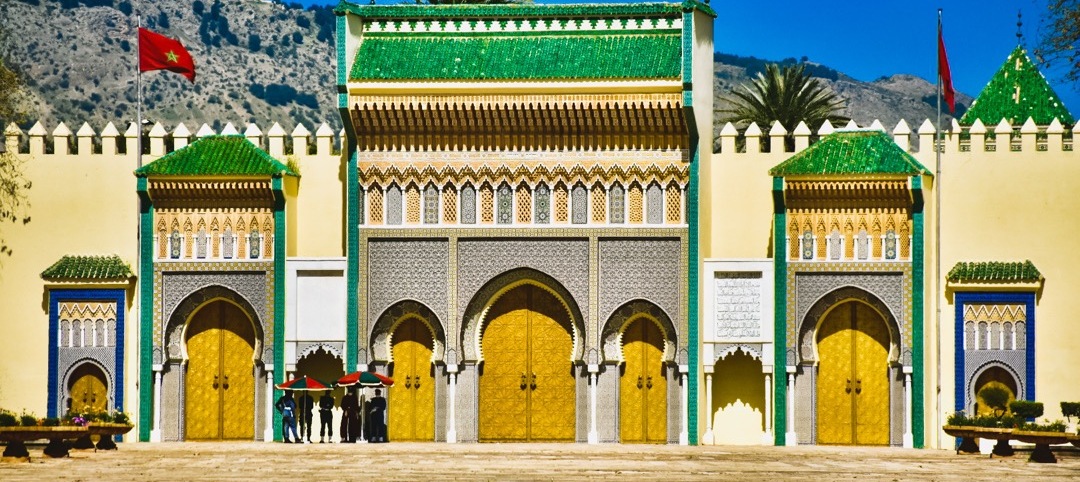Morocco Cultural Tours Blog
Morocco Tours,Cultural Tours of Morocco
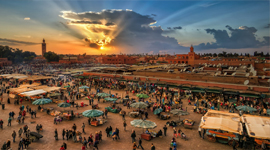 Morocco tours, Cultural Tours of Morocco, Founded in 1070–72 by the Almoravids, Marrakesh remained a political, economic and cultural center for a long period. Its influence was felt throughout the western Muslim world, from North Africa to Andalusia.
Morocco tours, Cultural Tours of Morocco, Founded in 1070–72 by the Almoravids, Marrakesh remained a political, economic and cultural center for a long period. Its influence was felt throughout the western Muslim world, from North Africa to Andalusia.
It has several impressive monuments dating from that period: the Koutoubia Mosque, the Kasbah, the battlements, monumental doors, gardens, etc. Later architectural jewels include the Badiâ Palace, the Ben Youssef Madrasa, the Saadian Tombs, several great residences and Place Jamaâ El Fna, a veritable open-air theater, visit Marrakech with our Morocco Tours.
Morocco Tours, Cultural Tours of Morocco
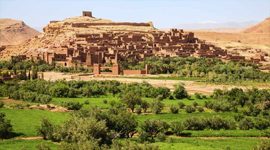 Morocco Tours and the Berber village of Telouet, once of the seat of the Glaoui rulers of this part of the Atlas and Southern Morocco – only 21 km off the main road from Marrakech to Ouarzazate just past the top of Tizi -n- Tichka – sits pretty much in a valley behind Morocco’s second highest mountain pass so it’s up pretty high in the mountains.
Morocco Tours and the Berber village of Telouet, once of the seat of the Glaoui rulers of this part of the Atlas and Southern Morocco – only 21 km off the main road from Marrakech to Ouarzazate just past the top of Tizi -n- Tichka – sits pretty much in a valley behind Morocco’s second highest mountain pass so it’s up pretty high in the mountains.
It therefore, is an excellent spot to escape the summer heat – usually several degrees cooler or more than the heat of Marrakech and Ouarzazate.
Morocco Tours, Cultural Tours of Morocco
The ksar, a group of earthen buildings surrounded by high walls, is a traditional pre-Saharan habitat. The houses crowd together within the defensive walls, which are reinforced by corner towers. Ait-Ben-Haddou, in Ouarzazate province, is a striking example of the architecture of southern Morocco.
Morocco Tours, Cultural Tours of Morocco
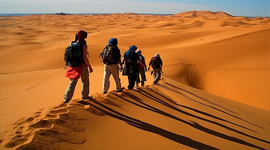 Morocco Tours and The city of Ouarzazate lies in the southern part of Morocco. It derives its name from a Berber phrase meaning without noise or without confusion. It is often the favorite stop for the tourists on their way to the Sahara Desert. Most of them stop over to stock up provisions for their further journey to the great deserts. If you are planning a similar visit you can surely plan a stop over for a day or two in the city of Ouarzazate, it is worth a visit. Many people are amazed by the marvelous and spiritual moments of the life in this city before moving ahead to virgin Sahara. Another reason for its popularity is the huge movie studios that are present here.
Morocco Tours and The city of Ouarzazate lies in the southern part of Morocco. It derives its name from a Berber phrase meaning without noise or without confusion. It is often the favorite stop for the tourists on their way to the Sahara Desert. Most of them stop over to stock up provisions for their further journey to the great deserts. If you are planning a similar visit you can surely plan a stop over for a day or two in the city of Ouarzazate, it is worth a visit. Many people are amazed by the marvelous and spiritual moments of the life in this city before moving ahead to virgin Sahara. Another reason for its popularity is the huge movie studios that are present here.
Morocco Tours, Cultural Tours of Morocco
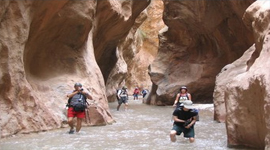 The Dades Gorge is spectacularly beautiful and the drive down is scenic all the way. It’s very tempting to stop every now and again, but make sure you reach your destination before sunset because the scenery just keeps getting better. To fully explore the place, make sure you go on a trek starting before sunrise.
The Dades Gorge is spectacularly beautiful and the drive down is scenic all the way. It’s very tempting to stop every now and again, but make sure you reach your destination before sunset because the scenery just keeps getting better. To fully explore the place, make sure you go on a trek starting before sunrise.
Morocco Tours, Cultural Tours of Morocco
The Todra Gorge is a trench of gigantic rock walls that, change color and run through the High Atlas Mountains creating an absolutely magnificent spectacle. Many travelers visit the Todra Gorge as they journey through the south on the ‘Road of One Thousand Kasbahs’, a route from Dades to Erfoud where that century old pisé fortifications remain. The mining town of Tinerhir is the base town for visiting the Todra Gorge. The Gorge is breathtaking and easy hike by foot with many places to stop to photograph along its well-maintained dirt road. Part of the spectacular scenery includes an opportunity to see how the local Berbers live as nomads; as they stroll through the gorges many winding roads herring their donkeys and camels.
Morocco Tours, Cultural Tours of Morocco
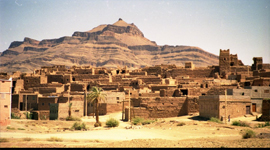 Built by the French beside the perennial Ziz River, the little town of Erfoud is not characterized by the charm of a centuries-old settlement. It’s red sand buildings, however, stand out in impressive contrast against the surrounding desert, and with its good hotels, restaurants and a lively souk, it is an excellent place from which to explore the surrounding landscape of desert and oases.
Built by the French beside the perennial Ziz River, the little town of Erfoud is not characterized by the charm of a centuries-old settlement. It’s red sand buildings, however, stand out in impressive contrast against the surrounding desert, and with its good hotels, restaurants and a lively souk, it is an excellent place from which to explore the surrounding landscape of desert and oases.
In the latter, the people live in fort-settlements knows as ksour, whose high walls, tightly packed houses and intricate pattern of paths and alleyways are as beautiful as they are charming. Made from lime and the red sand of the region, they provided protection from both marauding nomadic tribes and the scorching sun. Surrounding these settlements are the large palm groves that have sustained these communities on the fringe of the desert for centuries. Not far, the desert offers its own tourist attraction, in the form of camel rides to the sand dunes .
Morocco Tours, Cultural Tours of Morocco
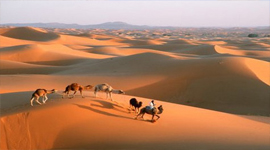 Erg Chebbi dunes are bean shaped and cover an area 30km long and around 5-10km wide. This is a region of nomad Berbers, as opposed to Zagora and Mhamid desert where people are Bedouin Arabs.
Erg Chebbi dunes are bean shaped and cover an area 30km long and around 5-10km wide. This is a region of nomad Berbers, as opposed to Zagora and Mhamid desert where people are Bedouin Arabs.
Alnif . Tazarine
At the gates of the desert in southern Morocco, the small town of Tazzarine at the heart of his palm grove is an ideal base for exploring the Drâa and Zagora region , away from the noise of civilization and crowds of tourists. It is an excellent stop on the major routes of southern Morocco: Zagora – Rissani – Erfoud and Zagora – Tinehrir – Todra.
Morocco Tours, Cultural Tours of Morocco
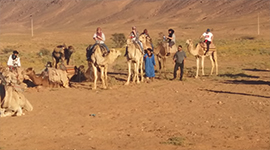 Agdz is located about 65 km south of Ouarzazate, 92 km north of Zagora. Agdz which means “resting place” is located on the old caravan route linking Marrakech to Timbuktu. Agdz long played an important economic role. The years of 1970 and 1980 were hard on the agricultural sector due to droughts. The weekly outdoor market (souk) is held on Thursdays across the bridge from the city center.
Agdz is located about 65 km south of Ouarzazate, 92 km north of Zagora. Agdz which means “resting place” is located on the old caravan route linking Marrakech to Timbuktu. Agdz long played an important economic role. The years of 1970 and 1980 were hard on the agricultural sector due to droughts. The weekly outdoor market (souk) is held on Thursdays across the bridge from the city center.
Morocco Tours, Cultural Tours of Morocco
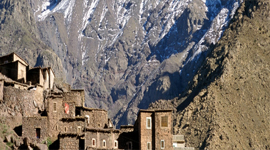 Zagora is a town in the valley of the Draa River in a region called the Souss-Massa-Draâ in south-eastern Morocco tours. It is flanked by the Zagora Mountain, from which the town got its name. Originally it was called ‘Tazagourt’, Berber for ‘twinpeaks’, referring to the form of the mountain. In old European maps, Zagora Mountain is already indicated although the town itself was only built in the 20th century. On the top of the Zagora mountain, the remains of an Almoravid fortress can still be seen, and there is an ongoing dispute as to the exact location of the former Almoravid mosque. A well-known sign at the town border states “Timbouctou 52 jours”, the supposed time it takes to get to Timbuktu, Mali on foot or by camel!
Zagora is a town in the valley of the Draa River in a region called the Souss-Massa-Draâ in south-eastern Morocco tours. It is flanked by the Zagora Mountain, from which the town got its name. Originally it was called ‘Tazagourt’, Berber for ‘twinpeaks’, referring to the form of the mountain. In old European maps, Zagora Mountain is already indicated although the town itself was only built in the 20th century. On the top of the Zagora mountain, the remains of an Almoravid fortress can still be seen, and there is an ongoing dispute as to the exact location of the former Almoravid mosque. A well-known sign at the town border states “Timbouctou 52 jours”, the supposed time it takes to get to Timbuktu, Mali on foot or by camel!
Morocco Tours, Cultural Tours of Morocco
Skoura is a town in Ouarzazate Province, Souss-Massa-Drâa, Morocco. According to the 2004 census, it has a population of 2,808.[1] Skoura is a fertile oasis lined with immense palm groves. The Kasbah Amerhidil is part of Skoura palm grove.
Morocco Tours, Cultural Tours of Morocco
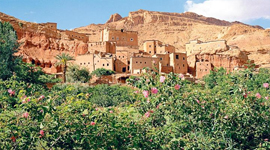 Hidden within the Oases of the Dadès Valley is a Moroccan jewel known as the heavenly pink town of El-Kelaa M’Gouna or more affectionately referred to as the Valley of the Roses. The town is famous for its sea of pink Persian rose landscapes. El Kelaa Des Mgouna has a vast distilling plant, Cap and Floral that accounts for producing liters of rose water popular in the nation’s cooking and perfumery. The rose capital also produces other goods made of Eau de rose such as hand and body soaps, oil, crème perfume and dried flowers that are popular among Moroccans and tourists.
Hidden within the Oases of the Dadès Valley is a Moroccan jewel known as the heavenly pink town of El-Kelaa M’Gouna or more affectionately referred to as the Valley of the Roses. The town is famous for its sea of pink Persian rose landscapes. El Kelaa Des Mgouna has a vast distilling plant, Cap and Floral that accounts for producing liters of rose water popular in the nation’s cooking and perfumery. The rose capital also produces other goods made of Eau de rose such as hand and body soaps, oil, crème perfume and dried flowers that are popular among Moroccans and tourists.
Morocco Tours, Cultural Tours of Morocco
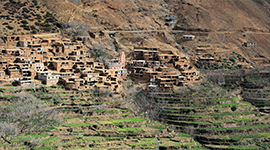 Tamtattouchte is a village, southern Morocco. It is one world in itself, with its snowcapped mountains, dunes changing colors, mysterious canyons, oasis, welcoming villages, wadis and large desert plateaus. Tamtattouchte is located a17 km Gorge known by enthusiasts Todgha climbing, A35 km Msemrir (village perched on top of the Atlas) and 45 km from the Dades Gorge where many rose gardens offer us a beautiful landscape of a thousand colors. Today, this village was founded by nomads, and is an oasis opens to visitors fascinated by the beauty and tranquility of the desert. Others are closest villages- Ait Hani 16 km, located on a plateau overlooking the valley. – Agoudal 45 km on the road Imlchil. – Imilchil 85 km, a site rich in historical and cultural perspective. There is always present at the end of August, the festival celebrates its engagement.
Tamtattouchte is a village, southern Morocco. It is one world in itself, with its snowcapped mountains, dunes changing colors, mysterious canyons, oasis, welcoming villages, wadis and large desert plateaus. Tamtattouchte is located a17 km Gorge known by enthusiasts Todgha climbing, A35 km Msemrir (village perched on top of the Atlas) and 45 km from the Dades Gorge where many rose gardens offer us a beautiful landscape of a thousand colors. Today, this village was founded by nomads, and is an oasis opens to visitors fascinated by the beauty and tranquility of the desert. Others are closest villages- Ait Hani 16 km, located on a plateau overlooking the valley. – Agoudal 45 km on the road Imlchil. – Imilchil 85 km, a site rich in historical and cultural perspective. There is always present at the end of August, the festival celebrates its engagement.
Following your 4×4 journey through the Erg Chebbi to Merzouga, you can enjoy a camel ride to the top of the dunes to watch the spectacular sunset over the Sahara. You then continue on to your accommodation for the night, a traditional Arab tented encampment situated not far from the base of the soaring dunes. The Ottoman Empire was the first to elevate the social importance of the humble tent by using it as a Royal structure, which followed sultans around on their visits and ceremonies. The large white tents, with black detail, have a colorful interior with attractive carpets and cushions, a small table and chairs and an open front to gather as much of the breeze as possible. A separate tent acts as a dining area, and basic ablution facilities consist of a Paratoo and small shower.
Morocco Tours, Cultural Tours of Morocco
The Ziz River leaves its craggy gorges behind at the city of Er Rachidia and continues its southward journey for another 100km (62 miles) along the Ziz Valley to the Moroccan pre-Sahara (hammada). Along the way, the largely hidden river feeds a string of oases and brings life to what would otherwise be dirt and stone. Dotted along its greenbelt are groups of kasbahs, or ksour, built to protect families in what was, until the 1930s, a largely lawless land. Some of the Ziz ksour have been abandoned for modern housing (the need for walled security no longer exists), but many are still standing and can be viewed from various roadside viewpoints alongside the valley.
At the valley’s southern extreme is an area known as the Tafilalt, sometimes spelled Tafilalet or Tafilet. From the 8th to the 10th centuries, this was an independent kingdom, wealthy from its trading role on the ancient Saharan caravan routes traveling through here between west and northeast Africa. Filalis, the people of the Tafilalt, has kept this independent streak through the centuries. The Alaouites, still sitting on the throne today through King Mohammed VI, originated here with the desert sultan Moulay Rachid, and the French met with fierce resistance in the Tafilalt for almost 20 years before finally succeeding in their “pacification program” of the area.
Morocco Tours, Cultural Tours of Morocco
Another unusual and not known town for most of you is this week’s hotspot. We are heading off to Midelt, in the middle of the Moroccan outback. This town is well worth a stop if you’re road tripping in Morocco, as it’s situated on the road from Fes/Meknes to the desert and dunes of south eastern of Morocco. The landscapes and nature around Midelt are unique, it’s like a lunar landscape. The city lies beneath the majestic Ayachi mountain, the queen of this region looking out over the town. Midelt is a town that is well known for its handicrafts, especially the locally made rugs and carpets.
Morocco Tours, Cultural Tours of Morocco
The ancient little town of Azrou is situated about 80 kilometers south of Fez in the Meknes-Tafilalet region of Morocco. This friendly Berber town lies at an altitude of about 1200 meters, nestled between steep wooded hills and a volcanic outcrop. The name Azrou means “rock” in Berber and the town
takes its name from the rocky volcanic outcrop. Azrou is well known in the area for its green tiled roofs, beautiful cedar forests, cherry and apple trees, as well as the friendliness of its people and is often visited by tourists as a day trip from Fez.
Each Tuesday there is a lively market in Azrou with a huge variety of goods on sale – both traditional and contemporary. Tourists and locals mingle together while enjoying a cup of traditional mint tea. The town is a lot more relaxed than some of the bigger cities and visitors have expressed appreciation for the fact that they can enjoy a traditional Moroccan town in such a relaxed and friendly atmosphere.
Morocco Tours, Cultural Tours of Morocco
Ifrane is a small city less than 10,000 people (50,000 in summer) located in the Middle Atlas Mountains of Morocco, just 58 kilometers south of Fez. The town was set up by the French during their colonization period as a quasi-ski resort,
and they actually took the name from nearby Sidi AbddalSalam Zawiya, a small Berber village 15 kilometers away. Not many tourists spend a whole lot of time in Ifrane, but giving it a day or two is worthwhile once one discovers the outlying natural gems that surround the region.
Because of its Alpine feel, tiled chalets, and snowbound winters, the town has inherited the name “Morocco’s Switzerland.” From Ifrane several places in the region can be seen.
In the summer, Ifrane is a sharp contrast to the drier areas of Fez, Meknes, and even Azrou that surround it. The lush greenery, cedar forests, and pastureland come to life due to the abundant rain and snowfall in the winter and spring months.
Morocco Tours
Fes sightseeing (Fez) is Morocco’s oldest Imperial city and its “old town” is now a UNESCO World Heritage site. The Medina (old town) is called Fes el-Bali and behind its high walls is a magical, medieval city just teeming with life in every one of its 9000 narrow streets. Fes is the cultural and spiritual capital of Morocco and you’ll certainly experience its vibrancy. Fes el-Bali The biggest attraction in Fes is the entire old Medina.Fes is famous for its leather products and most of it comes from the leather bazaar (souq) in old Fes. The tanneries have been in operation since medieval times and little has changed, which makes them absolutely fascinating to visit.The new part of Fes, called ville nouvelle, was built by the French and is totally different from the medina. The wide boulevards are lined with modern shops and traffic is hectic.
Morocco Tours
Near the beautiful archaeological site of Volubilis and the ancient town of Moulay Idris, lies the breathtaking city of Meknes. The Historical City of Meknes was listed as a UNESCO World Heritage Site in Morocco in the year 1996. This is a city that is steeped in history and anyone who visits the city can feel the presence of the inhabitants of the past. Although some of the buildings have been restored, it looks as if the constructors of the city walked out yesterday.
The city’s name, Meknes, is derived from the Miknasa, which was a Berber tribe. Roman communities inhabited this region in 117AD and the earliest history of the tribes that settled in this site date back to the eighth century. The Miknasa established a town here in the tenth century from where the fortified city grew in leaps and bounds.
The doors to the city are massive and very intimidating. Known as “Bab el Mansour”, its columns were looted from the Volubilis archeological site and they definitely instill a feeling of anticipation and excitement when standing before them. Sultan Moulay Ismail founded the historical city of Meknes in the eleventh century as a military settlement for the Almoravids. He fortified the city with staggeringly high walls that are triple-tiered and seem to carry on for miles. The narrow maze of cobblestone streets, endless stores and bustling street vendors, create a very authentic atmosphere within the city.
Visitors will be amazed at the well preserved European and Islamic architectural styles from the seventeenth century that are easily found in the city. The son of Sultan Moulay Ismail destroyed parts of the city in rebellion and the ruins add to the rich history of the city. Some of the buildings have been restored and guests can look forward to visiting the Great Mosque, the Great Mosque Tower, the Royal Palace and the Moulay Ismail Mausoleum.
This magnificent World Heritage Site in Morocco is an extremely noteworthy attraction that is popular with locals and foreign visitors. The city is easily accessible from destinations such as Rabat and Fez and is a significant historical monument to inhabitants of the past and the communities that shaped the future.
Morocco Tours
Located on the Atlantic coast in the northwest of Morocco, the site is the product of a fertile exchange between the Arab-Muslim past and Western modernism. The inscribed city encompasses the new town conceived and built under the French Protectorate from 1912 to the 1930s, including royal and administrative areas, residential and commercial developments and the Jardins d’Essais botanical and pleasure gardens. It also encompasses older parts of the city dating back to the 12th century. The new town is one of the largest and most ambitious modern urban projects built in Africa in the 20th century and probably the most complete. The older parts include Hassan Mosque (begun in 1184) and the Almohad ramparts and gates, the only surviving parts of the project for a great capital city of the Almohad caliphate as well as remains from the Moorish, or Andalusian, principality of the 17th century. Rabat bears witness to a capital city conceived at the time of the Protectorate, at the beginning of the 20th century. The project successfully adapts modernist town planning and architectural values within the context of the Maghreb, whilst incorporating them into the framework of the ancient city with its many historic and heritage components. The result embodies the emergence of a distinctive architectural and decorative style which is characteristic of contemporary Morocco.
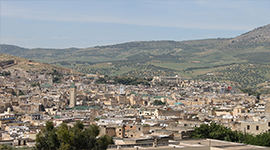 The well-conserved modern city has been rationally designed and contains quarters and buildings with clearly defined functions and significant visual and architectural qualities. The modern city is characterized by the coherence of its public spaces and by the putting into practice of public health ideas (services, role of vegetation, etc.). The habitat is illustrated by quarters with clearly asserted identities: the Medina and the Kasbah, the residential quarters and the middle-class housing of the modern city, and finally the neo-traditional quarter of Habous de Diour Jamaâ. The city includes a full range of monumental, architectural and decorative elements from the various earlier dynasties. The modern city of Rabat tangibly expresses a pioneering approach to town-planning, which has been careful to preserve historic monuments and traditional housing. The reappropriation of the past and its influence on 20th-century town planners and architects has resulted in a distinctive and refined urban, architectural and decorative synthesis. The property as a whole makes visible a heritage shared by several major cultures of human history: ancient, Islamic, Hispano-Maghrebian and European.
The well-conserved modern city has been rationally designed and contains quarters and buildings with clearly defined functions and significant visual and architectural qualities. The modern city is characterized by the coherence of its public spaces and by the putting into practice of public health ideas (services, role of vegetation, etc.). The habitat is illustrated by quarters with clearly asserted identities: the Medina and the Kasbah, the residential quarters and the middle-class housing of the modern city, and finally the neo-traditional quarter of Habous de Diour Jamaâ. The city includes a full range of monumental, architectural and decorative elements from the various earlier dynasties. The modern city of Rabat tangibly expresses a pioneering approach to town-planning, which has been careful to preserve historic monuments and traditional housing. The reappropriation of the past and its influence on 20th-century town planners and architects has resulted in a distinctive and refined urban, architectural and decorative synthesis. The property as a whole makes visible a heritage shared by several major cultures of human history: ancient, Islamic, Hispano-Maghrebian and European.
Morocco Tours
Few cities have had a more varied history than Tangier. Existing already as a Phoenician trading post in the middle of the 1st millennium BCE, it later became Carthaginian; the remains of a Carthaginian settlement can still be seen near Cape Spartel. In 81 BCE the Roman general Quintus Sertoriuscaptured the city (then known as Tingis) from the Mauretanian king Bocchus I. In 38 BCE, during a round of Roman civil unrest, Tingis was taken on behalf of Octavian (the future emperor Caesar Augustus) by Bocchus II from his brother Bogud, who supported Octavian’s rival,
Mark Antony. Becoming a free city in 42 CE, Tingis was made the capital of the Roman province of Mauretania Tingitana, with the name Tingis Colonia Julia Traducta, and it remained important commercially even after the political capital was removed to Volubilis. After five centuries of Roman rule and a brief occupation by the Vandals in the 5th century, Tingis was captured by the Byzantine Empire in the 6th century. When the Arabs arrived in the 7th century, however, Ceuta, not Tangier, seems to have been their principal fortress on the straight. The Arab general ʿUqbah ibn Nāfiʿ (Sidi Okba) reached Tangier in 682 and from there raided deep into Morocco. In 707, when Mūsā ibn Nuṣayr was appointed governor of North Africa, he had to reconquer Tangier; the Amazigh (Berber) Ṭāriq ibn Ziyād was appointed governor and in 711 launched an invasion of Spain, where his landing point, Gibraltar, still bears his name as a corruption of Jabal Ṭāriq (Mount Ṭāriq). In 951 ʿAbd al-Raḥmān III of Córdoba, the first caliph of the western Umayyad dynasty, annexed the city, and it remained under Muslim Spanish rule until the collapse of the caliphate about 80 years later. Under the Almoravids, Tangier became Moroccan again and—despite a failed attempt to conquer the city by the Portuguese prince Henry the Navigator in 1437—remained so until captured by the Portuguese in 1471.
In 1580 Tangier passed, with Portugal itself, to Spain; it returned to independent Portugal in 1656. In 1662 it was transferred to the English crown as part of the dowry of Catherine of Braganza, wife of Charles II. The English put great hopes on this new possession, but, though a fine mole (breakwater) was built and a new fortification erected, the expense of maintaining the city against Moroccan attacks and the Protestant suspicion that it was a center of Roman Catholicism caused it to be abandoned again in 1684. Since then it has remained a part of Morocco.
Tangier began to play a significant role in history again in the late 18th and early 19th centuries. At the end of the 18th century, a British consul and some 100 British citizens resided there and in the surrounding Tétouan region. During the siege of Gibraltar by the Spanish (1779–83), these Britons were expelled by the sultan. Tangier became the diplomatic capital of Morocco in the 19th century, and in 1845 Sir John Drummond Hay began his four-decade tenure there as British representative in Morocco; throughout that period British trade and political influence predominated in the region.
In 1844 Tangier was bombarded by a French fleet as part of French campaigns against the Algerian emir Abdelkader. The Spanish then invaded Morocco in 1860, thus challenging a British policy aimed at preventing any Continental power from securing control of the southern shore of the Strait of Gibraltar. This situation led the British to issue a warning that a permanent Spanish occupation of Tangier or of the nearby Moroccan coast would not be permitted. About the same time, various foreign powers began to establish their own postal services, and in 1864 a lighthouse was established at Cape Spartel that was maintained by the consuls.
The result of these activities and privileges was that Tangier received an international regime of its own when the rest of the country became a French protectorate in 1912. Already in the proposed Franco-Spanish Agreement of 1902, the two powers had been willing to see the city eventually become neutral, and the Anglo-French Agreement of 1904 stipulated that Tangier should have a special status. This was confirmed at the Algeciras Conference (1906), a meeting that arose partly from calls for Morocco’s independence made by the German emperor William II during a visit to Tangier the previous year (these events were part of what came to be called the Moroccan crises). With the establishment of the French protectorate, a commission with French, Spanish, and British members was appointed to oversee the administration of Tangier, and by 1914 it had with difficulty agreed on certain recommendations. The outbreak of World War I necessitated fresh discussions, and a statute was not agreed upon until 1923. Five years later further modifications were introduced, with Great Britain, France, Spain, the Netherlands, Belgium, Sweden, Portugal, and Italy being recognized as the administering powers. This statute remained operative until June 1940, when Spain took advantage of the fall of France during World War II (1939–45) to occupy the zone in the name of the khalīfah of Tétouan and to impose a Spanish regime on the city. After the war, the victorious Allies insisted on Spanish withdrawal and in October 1945 the international administration was reestablished, with the participation of the United States; Italy, an Axis country during the war, was readmitted later. With some minor modifications, the statute then remained in force until the independence of Morocco in 1956.
Morocco Tours
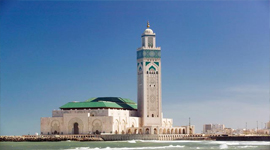 Chefchaouene, also called Chechaouene or Chechaouen, French Chaouen, Spanish Xauen, town, northern Morocco, situated in the Rif mountain range. Founded as a holy city in 1471 by the warrior Abū Youma and later moved by Sīdī Alī ibn Rashīd to its present site at the base of Mount El-Chaouen, it became a refuge for Moors expelled from Spain. A site long closed to non-Muslims, it was occupied in 1920 by the Spanish, who restored it to the Moroccan kingdom in 1956. Chefchaouene contains 12 mosques and presents a picturesque appearance, with houses roofed with round tiles common in southern Europe but rare in Morocco tours. Its luxuriant gardens are watered from a constant mountain spring. Chefchaouene has become a very popular vacation and tourist spot, especially for Europeans touring northern Morocco. It is famous for the blue walls of its buildings, a color unique among Moroccan towns. It is connected by road with Al-Hoceïma,Ouazzane, and Tétouan.
Chefchaouene, also called Chechaouene or Chechaouen, French Chaouen, Spanish Xauen, town, northern Morocco, situated in the Rif mountain range. Founded as a holy city in 1471 by the warrior Abū Youma and later moved by Sīdī Alī ibn Rashīd to its present site at the base of Mount El-Chaouen, it became a refuge for Moors expelled from Spain. A site long closed to non-Muslims, it was occupied in 1920 by the Spanish, who restored it to the Moroccan kingdom in 1956. Chefchaouene contains 12 mosques and presents a picturesque appearance, with houses roofed with round tiles common in southern Europe but rare in Morocco tours. Its luxuriant gardens are watered from a constant mountain spring. Chefchaouene has become a very popular vacation and tourist spot, especially for Europeans touring northern Morocco. It is famous for the blue walls of its buildings, a color unique among Moroccan towns. It is connected by road with Al-Hoceïma,Ouazzane, and Tétouan.
Morocco Tours
Experience a world of sand, sunsets and Saharan dune walking on this adventure in Morocco. Beyond the Atlas, the road descends the palm-fringed Draa Valley to Zagora and comes to an end in the vicinity of the village of M’Hamid. Here, to plunge into the desert, as to set off to traverse the region of giant sand dunes known as Erg Chigaga.
Morocco Tours
Rarely without one sunshine, often a top choice for vacationers, and always culturally appealing, major Moroccan landmarks surround Agadir. This city with centuries of history but technically only half a century old is a modern haven with exclusive access to picturesque landscapes and glimpses of Moroccan culture. And that’s what’s amazing about the age juxtaposition of Agadir; with a lasting past, the city is surprisingly modern. The medina sports a modern twist that attracts visitors seeking the familiar on exotic lands.
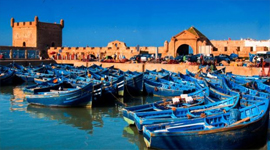 First established as a fish trading port in the 1500’s, the Berber roots of Agadir are commercial. European influences over the centuries have only strengthened Agadir’s reputation as a major port and primary agricultural source for Morocco’s Souss region. In 1960, fifteen thousand people perished, the city reduced to rubble in an earthquake. Yet the fatal natural disaster failed to strip Agadir of its natural identity. With plans to renew the medina’s individuality, rebuilding efforts enhanced its natural surroundings and preserved the few historic sites left.
First established as a fish trading port in the 1500’s, the Berber roots of Agadir are commercial. European influences over the centuries have only strengthened Agadir’s reputation as a major port and primary agricultural source for Morocco’s Souss region. In 1960, fifteen thousand people perished, the city reduced to rubble in an earthquake. Yet the fatal natural disaster failed to strip Agadir of its natural identity. With plans to renew the medina’s individuality, rebuilding efforts enhanced its natural surroundings and preserved the few historic sites left.
Today, the medina sports a modern twist and attracts tourists looking for something familiar on exotic lands. Few natural formations and built structures have weathered the disaster, which calls for extra appreciation. A memorial park is situated where Agadir’s old town center was, with the message “Allah, The King, Homeland”. The ports, too massive to navigate by foot, are still in operation and remain a crucial fixture for the Souss region’s economy. Agadir’s year-round summer climate accompanies a six-mile beach, which faces the rough undercurrent of the Atlantic. The raw earthy feeling on the sands is soothing and authentic. The Kasbah, built during the 16th century on a hill, offers a view overlooking the bay and exhibits resilience in its original protective purpose. For more hints of Moroccan culture, the Bert Flint Museum is only part of the larger collection of artifacts hosted in nearby Marrakech. Even outdoors, the sooks emphasize bright hues without the chaos of a larger marketplace. La Vallee des Oiseaux, the valley of the birds, hosts a zoo specializing in birds, where you can enjoy the local wildlife.
Morocco Tours
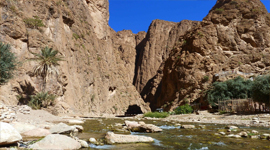 The Medina of Essaouira, formerly named Mogador (a name originating from the Phoenician word Migdol meaning a « small fortress »), is an outstanding example of a fortified town of the mid-eighteenth century, surrounded by a wall influenced by the Vauban model. Constructed according to the principles of contemporary European military architecture, in a North African context, in perfect harmony with the precepts of Arab-Muslim architecture and town-planning, it has played a major role over the centuries as an international trading seaport, linking Morocco and sub-Saharan Africa with Europe and the rest of the world. The town is also an example of a multicultural center as proven by the coexistence, since its foundation, of diverse ethnic groups, such as the Amazighs, Arabs, Africans, and Europeans as well as multiconfessional (Muslim, Christian and Jewish). Indissociable from the Medina, the Mogador archipelago comprises a large number of cultural and natural sites of Outstanding Universal Value. It’s relatively late foundation in comparison to other medinas of North Africa was the work of the Alaouite Sultan Sidi Mohamed Ben Abdallah (1757-1790) who wished to make this small Atlantic town a royal port and chief Moroccan commercial center open to the outside world. Known for a long time as the Port of Timbuktu, Essaouira became one of the major Atlantic commercial centers between Africa and Europe at the end of the 18th century and during the 19th century.
The Medina of Essaouira, formerly named Mogador (a name originating from the Phoenician word Migdol meaning a « small fortress »), is an outstanding example of a fortified town of the mid-eighteenth century, surrounded by a wall influenced by the Vauban model. Constructed according to the principles of contemporary European military architecture, in a North African context, in perfect harmony with the precepts of Arab-Muslim architecture and town-planning, it has played a major role over the centuries as an international trading seaport, linking Morocco and sub-Saharan Africa with Europe and the rest of the world. The town is also an example of a multicultural center as proven by the coexistence, since its foundation, of diverse ethnic groups, such as the Amazighs, Arabs, Africans, and Europeans as well as multiconfessional (Muslim, Christian and Jewish). Indissociable from the Medina, the Mogador archipelago comprises a large number of cultural and natural sites of Outstanding Universal Value. It’s relatively late foundation in comparison to other medinas of North Africa was the work of the Alaouite Sultan Sidi Mohamed Ben Abdallah (1757-1790) who wished to make this small Atlantic town a royal port and chief Moroccan commercial center open to the outside world. Known for a long time as the Port of Timbuktu, Essaouira became one of the major Atlantic commercial centers between Africa and Europe at the end of the 18th century and during the 19th century.



